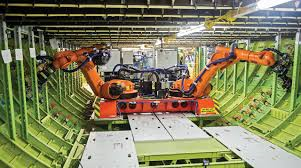
Breaking News
 Battleborn Batteries Responds! Their Overheating Device is a "Feature" not a "Problem
Battleborn Batteries Responds! Their Overheating Device is a "Feature" not a "Problem
 Actor Liam Neeson Outs Himself as MAHA After Narrating Pro-RFK Jr. Documentary Slamming...
Actor Liam Neeson Outs Himself as MAHA After Narrating Pro-RFK Jr. Documentary Slamming...
 Kyle Rittenhouse announced on social media Wednesday that he has tied the knot.
Kyle Rittenhouse announced on social media Wednesday that he has tied the knot.
 JUST IN: President Trump Grants Tina Peters Pardon
JUST IN: President Trump Grants Tina Peters Pardon
Top Tech News
 Build a Greenhouse HEATER that Lasts 10-15 DAYS!
Build a Greenhouse HEATER that Lasts 10-15 DAYS!
 Look at the genius idea he came up with using this tank that nobody wanted
Look at the genius idea he came up with using this tank that nobody wanted
 Latest Comet 3I Atlas Anomolies Like the Impossible 600,000 Mile Long Sunward Tail
Latest Comet 3I Atlas Anomolies Like the Impossible 600,000 Mile Long Sunward Tail
 Tesla Just Opened Its Biggest Supercharger Station Ever--And It's Powered By Solar And Batteries
Tesla Just Opened Its Biggest Supercharger Station Ever--And It's Powered By Solar And Batteries
 Your body already knows how to regrow limbs. We just haven't figured out how to turn it on yet.
Your body already knows how to regrow limbs. We just haven't figured out how to turn it on yet.
 We've wiretapped the gut-brain hotline to decode signals driving disease
We've wiretapped the gut-brain hotline to decode signals driving disease
 3D-printable concrete alternative hardens in three days, not four weeks
3D-printable concrete alternative hardens in three days, not four weeks
 Could satellite-beaming planes and airships make SpaceX's Starlink obsolete?
Could satellite-beaming planes and airships make SpaceX's Starlink obsolete?
Robots at Boeing: Ex-Boeing Employee Chimes In On Robotics

"XBE" writes ….
Hello Mish
You are 100% correct about the impact of robots in aircraft manufacturing and elsewhere.
I spent 37 years at Boeing as a design engineer (1967-2004). I have a MSME (master of science in mechanical engineering). This is what I know.
The new 777X composite wing plant in Everett shocked the IAM (machinists union) as to how few new jobs were needed.
The same happened at the new Propulsion assembly plant in Charleston. On opening day, IAM was greeted by a huge, giant robot welcoming them.
In 2015, 79300 Boeing employees delivering 700 airplanes. That's 113 employees per airplane.
When I joined Boeing in 1967, Puget Sound had 120,000 employees and Boeing delivered about 300 airplanes (from memory). That's 400 employees/airplane.
Since 1967 there has been a 72% reduction in the number of people it takes to build an airplane!
People I know in the robotic business tell me 60% of today's jobs will be gone in 20 years. You have covered them: trucking, strawberry/cabbage picking, etc.
Ex-Boeing Employee

 First totally synthetic human brain model has been realized
First totally synthetic human brain model has been realized Mach-23 potato gun to shoot satellites into space
Mach-23 potato gun to shoot satellites into space

